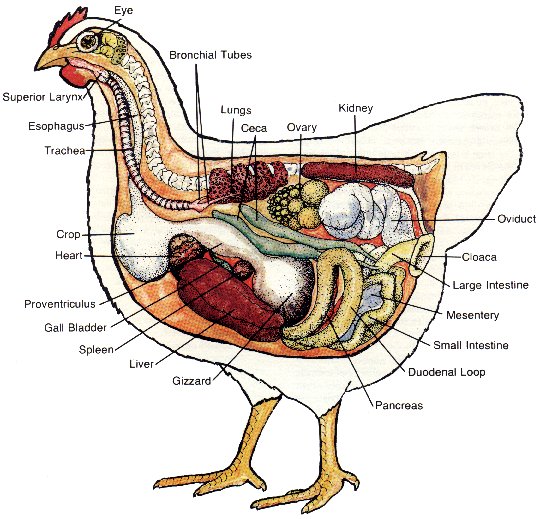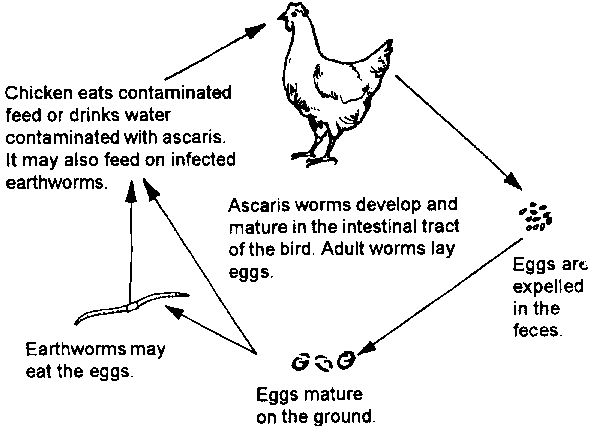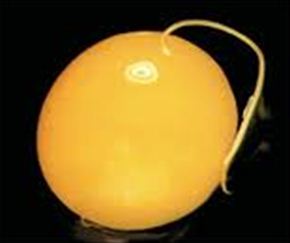Hi, our white leghorn is sick. She once had a beautiful bright big red comb, now it is pink and small. Her poop was big, which is normal, but it was green. And she was jumping around everywhere. Like flapping. Her face is pink too, with some sort of blue green splatter on her skin, it won't come off. Anybody knows how to cure her? Thanks
Navigation
Install the app
How to install the app on iOS
Follow along with the video below to see how to install our site as a web app on your home screen.
Note: This feature may not be available in some browsers.
More options
You are using an out of date browser. It may not display this or other websites correctly.
You should upgrade or use an alternative browser.
You should upgrade or use an alternative browser.
White Leghorn Sick!
- Thread starter OreoPlymothRock
- Start date
Do you have any pictures??
- Thread starter
- #3
Check her for mites and lice. I would worm them too.
- Thread starter
- #5
how do i do that?
Look under your hens feathers and their vent for mites and lice.https://www.backyardchickens.com/a/mites-lice-treatment-and-prevention
Here is something for the worms.

Treatment
A good treatment for mites and lice wood ash for your chickens to dust bath in. Sevin Dust I found out has been banned for use on poultry. There are other treatments like poultry sprays. Treat by spraying on the chicken and on the roosts, nesting boxes, everything. I use Garden & Poultry dust to help prevent (not treat) mites and lice. They’re many other treatments for these parasites. Covering the nits in petroleum jelly prevents them from hatching and they then fall off.Prevention
Always keep your chicken coops clean and dry. Use dust like Garden & Poultry dust to prevent these parasites. Make sure your chickens have a place to dust bath. Regularly check your chickens for these parasites (at night will be easier because you won’t have to catch them).Here is something for the worms.

- Thread starter
- #7
what are the symptoms for worms, lice, and mites?
Worms and Worming

Chickens and worms can actually get along together peacefully. Under good management, they can live together without any problems. Through gradual exposure chickens can build up a resistance to most parasites. When chickens have a problem with worms it’s usually because of stress or disease. Chickens with a bad worm infestation become thin because of the worms interfering with food absorption. Some worms don’t invade the digestive tract but the respiratory system causing breathing problems. This can be confused with other respiratory problems. Other worms invade other parts of the body like the eyes, windpipe, crop, stomach, etc. When you have a worm infestation it is not to be taken lightly and should be treated ASAP. Here are some types of worms that could be causing your chickens problems.

FlatWorms
Flatworms come in two groups, ribbon shaped tapeworms (cestodes) and leaf shaped flukes (trematodes).
Tapeworms: There 8 species of tapeworms that infect chickens. Most are host specific meaning ones that infect chickens won’t infect dogs. These parasites lodge themselves in the intestinal tract, but each species prefers different parts of the intestine. Most of these worms can be seen with the naked eye, only a few require a microscope. The smallest tapeworm is the deadliest. Symptoms include dull feathers, slow movement, emacation, breathing difficulty, paralysis, and death. Most common symptoms are decreased egg laying and weight loss. All tapeworms require an intermediate host; slug, ant, etc. Caged birds are more likely to get worms due to flys.
(Above) Tapeworm
Roundworms
Large Roundworm: This is one of the most common worms. This worm is around the same size as a pencil lead and grows as long as 41/2 inches. These parasites live in the intestines and will occasionally migrate into the cloaca and get trapped inside a newly forming egg. I wouldn’t want to see that. If you are hatching an egg that has a worm inside it, you will be able to see when candling. Females can lay up to 5,000 eggs they take 10 days or more to Embryonate. They will then survive in the soil up to a year or longer. They are then picked up by a chicken from dropping, soil, feed, or water. Older birds are more resistant to these worms then younger birds. Symptoms include pale head, droopiness, weight loss or slow growth, emaciation, and diarrhea. In very severe infestation, the intestines become plugged with worms and cause death. A not so bad roundworm infestation and a disease together (like coccidiosis or infectious bronchitis) can cause death.

Capillary Worm: There six types of capillary worms and they look white and are hair like. Most can’t be seen with our eyes. These usually lodge themselves in the crop, ceca, or intestines. In bad infestation they may be found in the throat or mouth. Symptoms are pale head, poor appetite, droopiness, weakness, emaciation, and sometimes diarrhea. These worms are most likely to occur in built-up litter.
Crop Worm: These are easily confused with the crop worms. They invade the crop and sometimes esophagus. These worms look like threads and have an indirect life cycle. Unless they get out of hand these worms aren’t a big problem. Signs of bad infection are droopiness, weakness, and lack of activity, reduced appetite, and thickening of the crop wall. These can be controlled by controlling beetles and cockroaches.
Cecal Worm: The cecal worm is the most common worm in North America. It infects the chicken’s ceca and carry’s blackhead which most chickens are immune to. Thankfully cecal worms don’t seriously your birds health. These worms are slender, white, and ½ inch long. They have a direct cycle. Phenothiazine is the approved method of treatment.
Stomach Worm: These worms invade the proventriculus, causing anemia, emaciation, diarrhea, and in severe infestations, death. This worm is a bright red in color. The elongated ones are males, the roundish ones are females. They have an indirect life cycle involving grasshoppers and cockroaches.
Eye Worm: The eye worm is prevalent in the southern United States, Hawaii, and the Philippines as well as other subtropical areas. It is a small, white worm that lodges itself in the corner of a chicken’s eye. The eye becomes swollen, inflamed, and watery, impairing the chickens vision. The eyelids may stick together and the eye may become cloudy and eventually be destroyed. The chicken will scratch at its eye trying to relieve irritation. Eye worms have an indirect cycle. Worm eggs deposited in the eye pass into the tear duct, are swallowed by the chicken and expelled in droppings and are eaten by cockroaches. When the chicken eats the infected cockroach the worm larvae migrate up the esophagus to the mouth, through the tear duct, and into the eye. Wild birds are also affected by eye worms and could spread them to your chickens. Here is how to remove eye worms.
http://www.youtube.com/watch?v=bWQ4c-NJm4w
(Above) Eye Worm
Gapeworm: This worm buries its head in the lining of the chicken’s windpipe or other part of the respiratory system, causing “the gapes” (Pictured below). It gets its name because of the yawning or gasping for air chickens do when infected by this worm. These worms can be seen with our eyes and are also called “red worms” or “forked worms” each blood red female has a somewhat paler male permanently attached to it forming the letter Y. These worms can cause considerable losses in free-ranged flocks, particularly those associated with adult turkeys. Its more harmful in younger birds, older birds are more resistant. Chickens cough up eggs, swallow them, and then poop them out. Symptoms include yawning, grunting, gasping, sneezing, coughing, choking, loss of energy, loss of appetite, weakness, emacation, closed eyes, head shaking, frequent throwing of head forward with mouth open to gasp for air, and convulsive shaking of the head (to try and dislodge worms from windpipe). Gapeworms multiply rapidy, eventually suffocating the bird.

(Above) Classic movement of a chicken with gape worm.
Thorny-Headed Worm: This worm is most common in Asia then in North America. It invades a chicken’s intestine, causing anemia and weakness. It is cylindrical in shape. It can be identified by its tubular sucking appendage, or proboscis, sporting curved hooks or spines. These worms have an indirect cycle. There hosts include snakes, lizards, and a variety of arthropods.
Worms in eggs: This is very rare but not unheard of. This is most common when your chicken has a very bad roundworm infestation.

Worming
There are a few different treatments for worms. Some treat multiple worms and some only treat a few.
If you look up these wormers on Backyardchickens.com you will find the dosage and withdrawal period.
If you have any question please ask.
WillowBranchFarm
Mites & Lice! Treatment and Prevention
A parasite is any living thing that lives off another living thing. External parasites can either suck blood or eat feathers. Chickens with bad infestations become thin, don’t lay eggs well, and have reduced fertility. With really bad infestations your birds may die. Chickens can get anemia from these bugs. Hens, to some extent can treat themselves by dust bathing. Dust bathing is really good for your chickens. It dislodges the parasites and also helps get dirt and oils off of them. Make sure your chickens have an area to dust bath and if they don’t, put a big pan filled with sand in their pen. Inspect your hens regularly for signs of parasites.
Parasite symptoms: (All of these symptoms don’t apply to every parasite listed)
- Itchiness
- Bare patches
- Lots of scratching
- Loss of weight
- Diarrhea
- Symptoms of paralysis
- Swollen legs with scales standing up
- Laying slows or stops
- Sitting hunched up with ruffled feathers
- Reduced fertility
- Listless
Here is a picture of a mite infestation.
Picture by bluebee
Mites
Mites are spider like creatures. These bugs are under 1/25 of an inch in their length. Most are microscopic (can’t be seen with our eyes). They usually live off of blood, tissue cells, or feathers. They can be spread by contaminated shoes, other chickens, equipment, clothing, etc. Mites aren’t always on the chicken; some actually spend a good amount of time off the bird. Here are some common mites.Red Mites
This mite has eight legs and crawls on the chickens during the night to feed on their blood. Red mites are gray until they eat, after filling up with blood they turn red. Found in tiny cracks, crevices, or in nesting boxes, these can actually kill chickens. Also check under the perches for red mites. Living up to one year without feeding on hens, take care to treat the birds multiple times. When using a broody hen, inspect the nest she will be brooding in very carefully, making sure to check every crack for these mites. Birds may not go up at night if the infestation is bad. In hot weather the population of red mites really increases. A single female can lay up to 120,000 eggs. Check your birds at night for red mites. They will be crawling around on perches and on your birds. They can bite humans if the infestation is really bad. These horrible little bugs can carry New Castle disease, Fowl Cholera, and Fowl Pox.
Scaly Leg Mites
Scaly leg mites are small mites that burrow under the scales on chickens legs. They spread very slowly from bird to bird. If the legs are seriously affected, the scales will be lifted and under the scale it will be inflamed and bleeding. If it goes unnoticed for a while, the legs will have little white encrustations (crusts) between the scales. Remove these but only after soaking and several treatment of petroleum jelly or else they will bleed. Only really bad infestations cripple the bird. An easy treatment is Petroleum Jelly (Vaseline) on the legs. This will smother the mites.
Notice the raised scales.
Pictures by TimBaumann
Northern Fowl Mites
A Northern mite is the most serious external parasite. It shows itself as damp patches on feathers, there will be many crawling around on the patches which occur in the neck feathers and vent feathers. The wings and tail affected by these birds looked like they have been chewed on. They also cause scabby skin and darkened feathers around vent. You may also see them (in bad infestation) crawling around on egg in nesting boxes. These mites multiply very quickly, so act fast with treatment. Take all the chickens out and put them in a different coop for a while. After a couple weeks in an unoccupied coop, these mites will die. Clean the hen house very well, making sure to get every corner. Treat your chickens every week until the mites are gone. Killing these mites is hard but not impossible. Chickens should not be put back in the infected coop until the coop has had time to air out from all the powders/sprays. Northern fowl mites are hard to control, don’t give up.
Feather Mites
These mites live on the feathers and eat the plumage. The damage to the base of the feather is very bad and ruins the feathers. Thankfully, they are not common in North America. Some types of feather mites cause so much irritation that the birds pull out and scratch their feathers in order to get relief.
Chigger Mites
Chigger mites are red and infest the skin of chickens as well as humans. They leave small itchy red spots where they have been feeding. These mites can be straw colored and are very small. The immature chiggers are the ones that feed on blood. Chiggers are commonly found under the wings, on the breast, and legs. When feeding chiggers inject poisonous saliva that liquefies the skin, they then feed off of that. It then causes really itchy skin, swelling, and scabs. Young birds stop eating, drinking, and may die. I’ve been bit by a few chiggers before and it really itches.
Lice
These pests are either blood sucking or chewing parasites. But chicken lice only eat feathers or shedding skin. Lice vary in size and shape length is 1/25 to ¼ inch. Most are yellow or straw colored. They are very hard to see on white chickens but easy on dark. Luckily, lice die quickly when off of chickens. They’re many types of lice that can be seen, head, body, and feather lice. By grooming chickens can keep lice at a minimum. So debeaked birds or overgrown beaked birds are more likely at risk for lice. Because lice bite chickens, they pull their own feathers out to try and make the irritation stop. Chickens lay poorly and have low fertility when infected with lice. They are spread through contact with other contaminated birds. You can see lice crawling around on the chickens skin and vent. Louse eggs will be clumped on the feather shaft.Body Louse
Body lice chew through the skin into growing quills to get to the blood. You will find scabs on skin and light eggs. Body lice move really fast so it may be hard to see when you check your birds.
Head Louse
This is the most serious louse pest. They are very harsh on young birds and they spread from the hen to her chicks. Seriously infected chicks will die.
Common Fowl Louse
These are the most common louse. Because parasites itch, feathers are picked and scratched, making bare patches. They reproduce rapidly laying groups of eggs called nits.
Treatment
A good treatment for mites and lice wood ash for your chickens to dust bath in. Sevin Dust I found out has been banned for use on poultry. There are other treatments like poultry sprays. Treat by spraying on the chicken and on the roosts, nesting boxes, everything. I use Garden & Poultry dust to help prevent (not treat) mites and lice. They’re many other treatments for these parasites. Covering the nits in petroleum jelly prevents them from hatching and they then fall off.Prevention
Always keep your chicken coops clean and dry. Use dust like Garden & Poultry dust to prevent these parasites. Make sure your chickens have a place to dust bath. Regularly check your chickens for these parasites (at night will be easier because you won’t have to catch them).If you have any question please feel free to ask.
~WillowBranchFarm~
- Thread starter
- #9
Oh, she also always sits on a nest with no eggs in it. All she does is sit there all day. Any ideas why she does that or if she has a disease?
New posts New threads Active threads
-
Latest threads
-
-
-
-
-
new pullet pecked (need first aid suggestions) and bird integration
- Started by firellama
- Replies: 0
-
-
Threads with more replies in the last 15 days
-
-
-
-
Can I get some help from someone with careless neighbours who own dogs.
- Started by RiDaGeckoGuy
- Replies: 102
-
-



